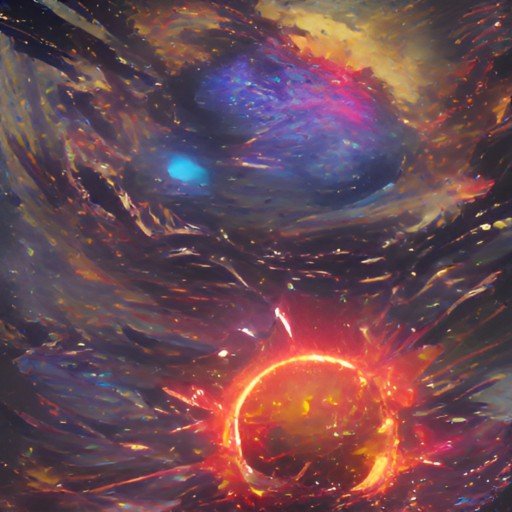Introduction
One of the most exciting developments in the world of blockchain and cryptocurrency is the rise of Non-Fungible Tokens (NFTs). NFTs are unique digital assets that represent ownership or proof of authenticity of a digital item on the blockchain. According to a report published by globenewswire in 2022, the majority of NFTs are created on the Ethereum blockchain. However, NFTs are now common on many blockchains. In the hot market of 2021, NFT sales surged past 41 Billion USD - just 9 billion shy of conventional art sold the year before. With the growing popularity of Cardano, an increasing number of NFT projects are exploring this newer platform for their needs.
In this installment of our Ethereum/Cardano series, we dive into the world of NFTs on Ethereum and Cardano. How do they differ? What are their strengths and weaknesses and origins?
NFTs: The Hype, The Reality, and The Potential
Ethereum has been the go-to platform for NFTs for a few reasons. First, it was the first to prove out smart contract capabilities, which are just computer programs built to run on blockchain networks. With smart contracts you could, for the first time on blockchain, encapsulate any arbitrary logic in computer code and secure that code on the blockchain. Once the code is published, it can’t be changed unless you create a new version - much like the days when personal computer software came on compact disks (CDs). This property of smart contracts made a perfect lab for engineers to come up with the Ethereum Request for Comment 721 proposal (ERC-721). Once ERC-721 was adopted as a standard, creating NFTs became relatively easy. Establishing rules around minting the NFTs their transfer and use also became as easy as starting with a template and modifying a few bits here and there. Ethereum’s dominance started with projects like CryptoKitties in 2017, which showcased the potential for unique, tradable digital assets.
Cardano entered the NFT scene later. However, the platform’s design, with its focus on sustainability, scalability, and research-driven approach, promises a different environment for NFT creation and trade. Unlike Ethereum, Cardano had the ability to create NFTs before the network could even support smart contracts. Cardano’s Mary network upgrade event introduced the concept of native assets. Rather than having to write an entire smart contract, you can write a simple json script that tells Cardano your policy for minting and burning NFTs. This approach is far more energy efficient and provides more control and privacy than centralized smart contracts.
The Hype
The NFT market has exploded in popularity, with some digital assets selling for millions of dollars. From art and music to virtual real estate and digital collectibles, NFTs have become a cultural phenomenon. Celebrities, artists, and brands are all jumping on the NFT bandwagon, further driving attention and investment into this space. NFTs have become an access pass to exclusive Hollywood parties.
The Reality
Not all that glitters is gold. The NFT market is also rife with speculation, and many believe it’s in a bubble. High transaction fees on Ethereum have also deterred many from participating. Additionally, concerns about the environmental impact of Ethereum-based NFTs have been widely discussed. Even with Ethereum moving away from Proof-of-Work to Proof-of-Stake, NFT transactions are still computer-intensive.
While Cardano doesn’t have the same energy and computer-intensive challenge as Ethereum, it too is also plagued with speculation and many failed attempts to create NFT businesses.
The Potential
The real potential of NFTs lies beyond the current hype. They could revolutionize the way we think about ownership, intellectual property, royalties, and digital assets in general. NFTs have applications in real estate, finance, gaming, and many other industries.
Here is a conversation we published with blockchain builder Adam Dean on the potential of NFTs: What About The How?
Comparison
Minting & Trading:
While Ethereum’s ERC-721 standards have become the industry norm for NFT creation and trading, Cardano offers a native token standard for creating NFTs without the need for smart contracts, potentially simplifying the minting process.
Because all NFTs on Ethereum have to exist in a smart contract, this means your ownership is always mediated by the code. This puts the onus on the user to know that they can trust the code, or trust the brand associated with the code. Also, since the code can have god-like power over all of the NFTs whose existence it is enabling, that also means assets can be centrally frozen and even have their ownership changed. The only way to know otherwise is reading and understanding the code, or finding someone to do it for you. Control and mediation is a topic all on its own, one we covered in an early installment in this series: Wallets on Cardano and Ethereum
With Cardano’s native token standard, minting starts with a text file, colloquially referred to as your policy, minting policy, or monetary policy. This is a simple JSON text file that tells the blockchain under which conditions new NFTs can be created, or under what conditions NFTs presented in a transaction can be burned–taken out of circulation.
If you have more complex minting and burning conditions, your logic can be written in a smart contract instead of a simple script, since Cardano later added support for smart contracts.
Costs:
Ethereum’s transaction cost (gas fees) have been a point of contention for many NFT creators and traders. It’s difficult to know the true cost ahead of time, since the fee pays for the time it takes the smart contract to run, which can vary. During peak network usage, fees can easily add up to hundreds of USD in Eth, in a few rare cases even thousands.
For companies using NFTs to tokenize their wares this means maintaining multiple smart contracts for years.
Cardano’s transaction fees as of this writing is fixed and can be calculated ahead of time. Most simple NFTs transactions cost around 0.18 Ada (about 5 cents in today’s market). This makes Cardano an attractive option for NFT projects and customers alike.
For companies building on Cardano using NFT the network handles your NFT policies without the expensive upfront cost of writing or customizing a smart contract, or maintaining it. The network also handles subsequent interactions like transfer, sales and, decentralized finance interactions with that NFT sans you or your smart contract having to mediate it.
Ecosystem & Tools:
Ethereum boasts a rich ecosystem of tools, marketplaces, and platforms specifically for NFTs. Cardano’s ecosystem is growing, with several NFT platforms emerging, but it’s still in its early days.
Security & Ownership:
Cardano under the hood works the same way Bitcoin works when it comes to keeping track of who owns what, by deploying the use of UTXO based accounting. With this model, once you mint an NFT, the person you minted it from no longer has any control or direct link to the NFT in your digital possession. For that NFT to be transferred again, locked in a smart contract or put up for sale, you have to provide your digital signature.
All NFTs on Ethereum exist inside of smart contracts instead of directly in your digital position. This means that contract code has to run anytime that NFT transitions from one place to another on the blockchain–introducing the possibility of exploits that bad actors can use to get the code to do things it was not designed to do.
Conclusion
Ethereum’s pioneering role in the NFT space is undeniable and it is continuing to innovate around NFTs. The ERC-1155 introduced shortly after 721 attempted to reduce the cost and burden of creating and maintaining NFTs by allowing teams and businesses to use one smart contract for multiple token types instead of 721’s single type.
As the world of digital assets evolves, there’s plenty of room for multiple players. Cardano’s approach to sustainability, combined with its research-driven design, makes it a promising platform for the future of NFTs.
Teams on Cardano finds ethereum’s concept of a central smart contract being able to do more with NFTs the contract was used to create useful to certain business applications. Gaming and membership based applications being two commonly cited examples. To that effect, there is a Cardano Improvement Proposal (CIP 68) currently being discussed to allow businesses on Cardano to have their ethereum cake on Cardano and eat it too. The big idea is to create NFTs in pairs instead of singular unique items. One item in the pair lives in the user’s wallet and functions like any other Cardano native asset. The other half lives and remains in the custodianship of the smart contract base policy. This way the smart contract can kinda sort of have a direct link to NFTs in user’s wallets without actually controlling the NFTs in users wallet.
Both Ethereum and Cardano offer unique advantages for NFT creators and collectors. As we continue our Ethereum and Cardano series, it’s evident that while these platforms may differ in their approaches, they share a common goal: advancing the blockchain industry and harnessing the untapped potential of NFTs.




No comments yet…